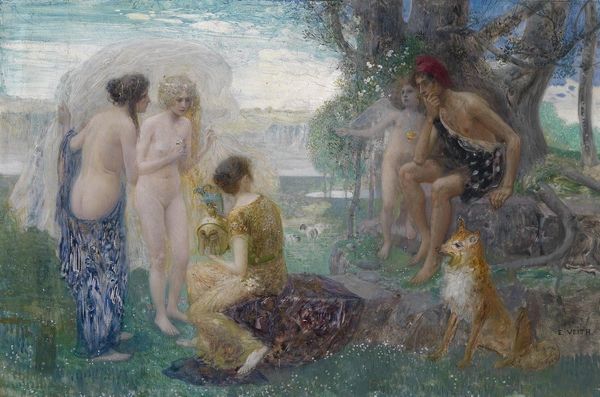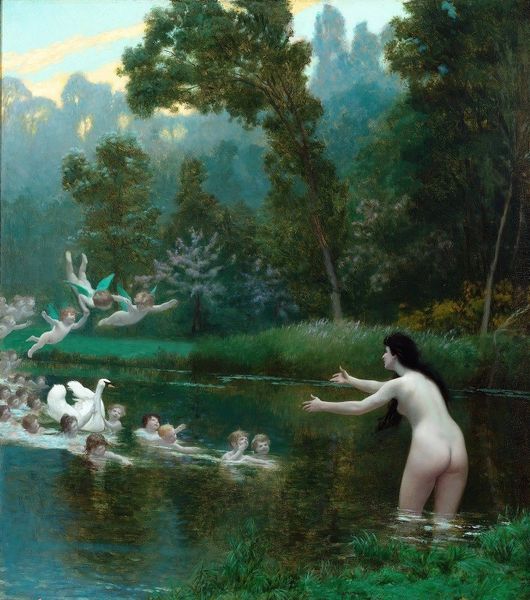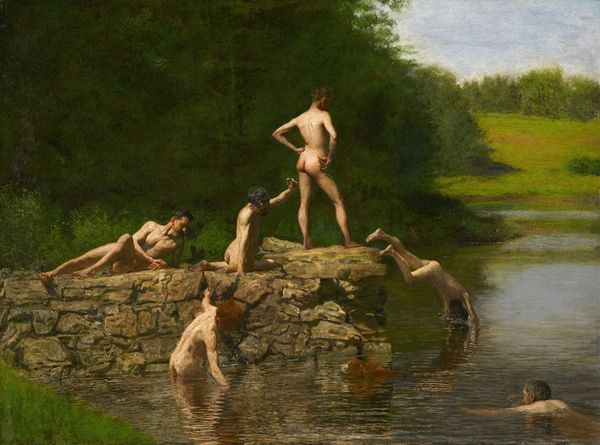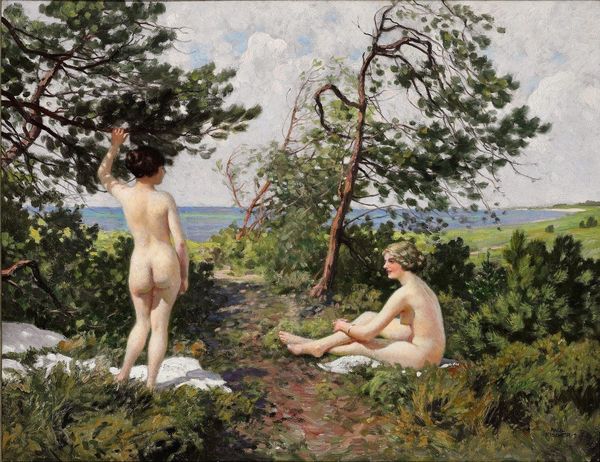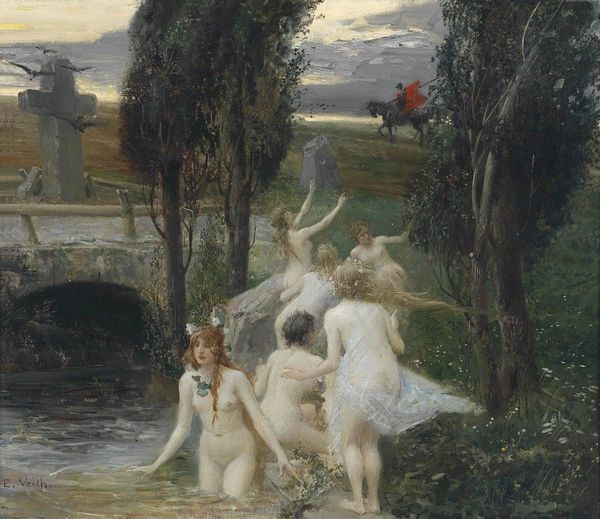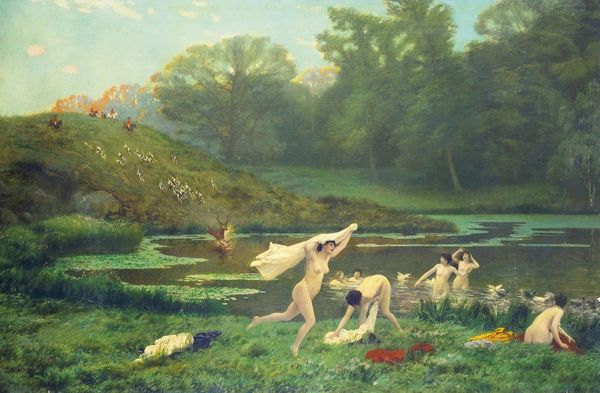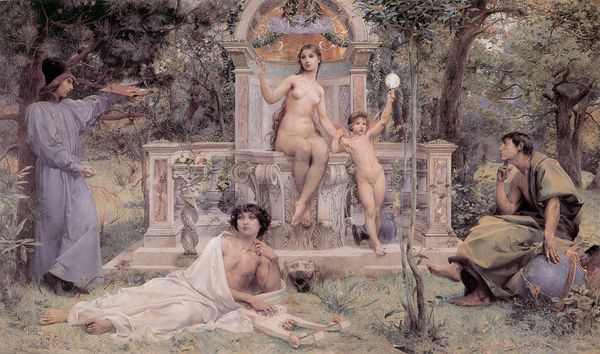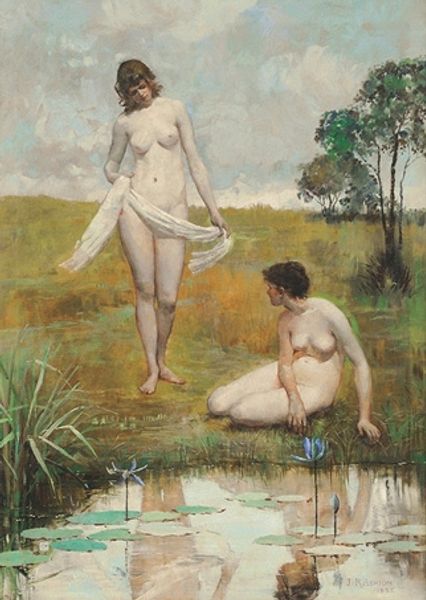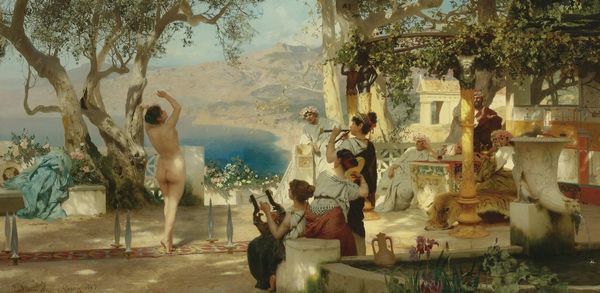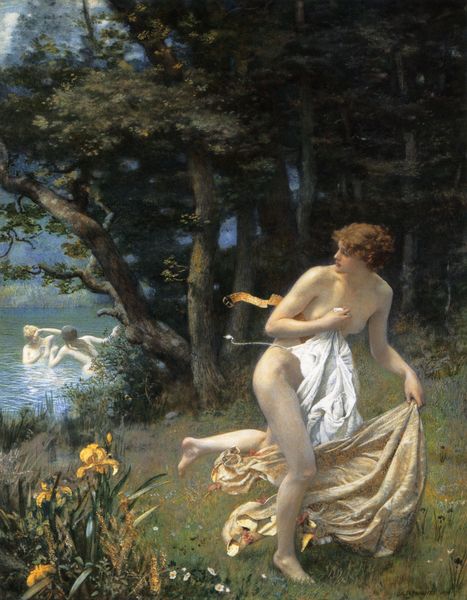
painting, oil-paint
#
gouache
#
allegory
#
painting
#
oil-paint
#
oil painting
#
mythology
#
history-painting
#
academic-art
#
nude
#
watercolor
#
realism
Copyright: Public Domain: Artvee
Curator: Today, we’re looking at Albert von Keller's "The Judgement of Paris," painted in 1891 using oil paint and gouache. What are your initial thoughts? Editor: It’s immediately striking how soft and dreamlike the scene is. The composition, though classical in subject, feels very natural and accessible because of that dreaminess, with the focus on skin and textures. Curator: Indeed. The positioning of Paris with his back to us immediately directs the viewer’s gaze towards the goddesses. Observe the almost ethereal quality of Venus, achieved through Keller’s masterful use of light and color, and the clear classical allusion that the other figures project. Editor: Yes, the hazy treatment and impasto work contributes to this sensual handling. However, beyond the idealized forms and surface-level seduction, what does Keller’s chosen method communicate about labor, class, and artistic intent? How would Keller’s patrons understand such displays of flesh at the end of the nineteenth century, after so many revolutions, coups and social changes? Curator: These stylistic choices function to create a deliberate sense of detachment from everyday life. Keller is aiming to transport us to a timeless realm of beauty and mythical grandeur, but you rightly address the elephant in the room and point towards other levels of interpretation for contemporary spectators. He evokes an archetype as well as something extremely desirable within the emerging aesthetic movements that surround the end of the 19th century. Editor: Also the use of goats in a Judgment of Paris setting might not only be some random animals that might just add a classical reference. In this work, goats appear like commodities being assessed. Curator: Interesting! Ultimately, the piece leaves us considering both its inherent formal qualities and its contextual implications, its commitment to aesthetic experience versus its implication as cultural object. Editor: A fascinating work that merges idealized beauty with the weight of material and economic undertones and implications in the way the painting was achieved.
Comments
No comments
Be the first to comment and join the conversation on the ultimate creative platform.
